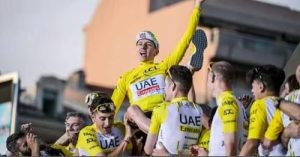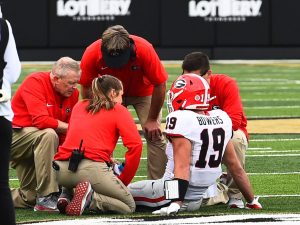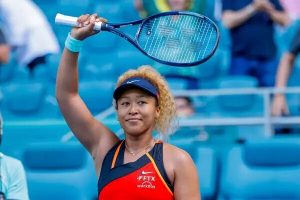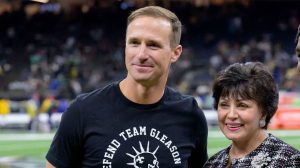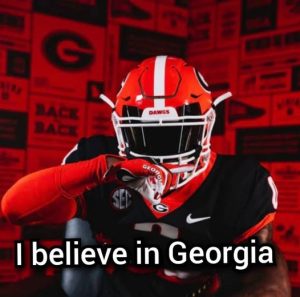
Rankings and contract projections for top 50 MLB free agents

Welcome to the off-season! I’ll do just a quick rundown of what you need to know about these 2023–24 MLB free agent rankings and projections, since I think you’ll likely scroll immediately to the players and then return back here when you have a question.
For simplicity, players are ranked in the order of their projected guaranteed contracts, not how good I think they are. The contract projections are a mix of my opinions and those of agents and executives, but the aim is to try to predict what will happen, not what I think the players are worth. When there’s a notable debate to be had over the length or total value of a contract, I’ll note it in the blurb.
Seven players received the qualifying offer (a one-year, $20.325 million contract) this week and can choose to accept or decline it by Tuesday. They are all expected to turn it down, which means that if they leave their 2023 clubs, those teams will be entitled to draft pick compensation. The signing team would also lose some draft pick capital, but that price is slightly different depending on the revenue status of each club.
Two winters ago, teams set a record for free agent spending at $3.625 billion, then we set another mark last winter at $3.938 billion (by my math). Industry chatter is that this winter should see healthy spending once again, but the talent level of the group is notably down, except for the top-ranked player. I wouldn’t
Ohtani’s career has been a lesson in how foolish it is to assume the future for any one player will be linear. While he was in Japan, there was years-long buzz that he’d be the best player to come over to the United States in a long while. But by the spring training before his first MLB season after signing with the Los Angeles Angels, scouts had already turned on him. At season’s end, he was a rookie phenom accomplishing things no other player had, but the questions continued when he started only 12 games on the mound in his first three seasons due to elbow surgery and was below replacement level in the shortened 2020 season.
Until the 2021-23 seasons, when he posted a combined 26.5 WAR and should end up with three straight top-two MVP finishes. I spoke to 26 industry insiders in May and they expected him to get over $500 million this winter; that projection moved to at least $550 million later in the season as he continued to stay hot. But there was a hiccup even within this incredible run. Ohtani had his second Tommy John surgery in October, taking some air out of the free agency hype.
Now you have to question his pitching contributions going forward, particularly with a long-term megadeal. We can assume (but not guarantee) he’ll be a good pitcher again in 2025, but to maximize Ohtani’s value, does he need to be on a hard innings count, have planned breaks from pitching throughout the season, or be used in fewer but more important innings? Does that unsure pitching outlook totally change his long-term value?
I’m asking questions but not answering them because his career has been a roller coaster with highs so high that there aren’t any comparables. There’s some growing buzz that Ohtani will want to answer this question by signing a shorter deal, then pitching in 2025 (and maybe 2026) before hitting the market again to cash in, but also maximize his earnings this winter. This would mean signing for something like a six-year deal at a high AAV (let’s say $55-60 million per year) with an opt-out or two that he intends on using.
For a long-term deal, I’ll adjust down from the $600 million that it seemed like we were headed toward pre-surgery but still keep my projection in the precedent-shattering megadeal area because Ohtani (1) is still pretty young; (2) diversifies your risk by being elite both ways with a road for a solid on-field ROI from either; and (3) has immense marketing value, unprecedented in this sport, that isn’t diminishing anytime soon.
The natural starting point for an evaluation of Yamamoto’s market is Kodai Senga’s deal with the New York Mets after also coming over from Nippon Professional Baseball. Last winter, Senga was going into his age-30 season and had plus stuff with fringy command, which is about what we saw during his rookie season, with outcomes a bit better than expected. In hindsight, Senga’s five-year, $75 million deal (with no posting fee) looks like a strong deal for the Mets.

Yamamoto is five years younger and has comparable stuff (mid-90s heater, easily plus splitter, plus curveball) but importantly, he has plus command. When I started looking into him around midseason, I assumed his market would be in the $90-120 million area (plus posting fee to his NPB club), but then I noticed an interesting trend.
As teams were falling out of the playoff race and beat writers turned to previewing the offseason of the clubs they follow, literally every single one I saw mentioned Yamamoto in a way that suggested the team privately acknowledged real interest in the pitcher. Big-market contenders would love to get a younger pitcher and not have to lose the draft pick they would for Blake Snell or Aaron Nola. Mid-market clubs, which value draft picks even more, can afford him and are drawn to the upside of a player who could become a coveted frontline arm whom they don’t have to develop internally. Even smaller-market clubs seem to see Yamamoto as a potentially solid value relative to other free agent options, due to his command and age. At this point, I assumed the bidding would run up to $150-170 million plus posting.
Then as I started preparing this list, almost every exec I spoke with said Yamamoto will get close to, if not more than, $200 million. You might wonder how a 5-foot-10 righty with no MLB experience and good-but-not-great stuff seems like a shoo-in for one of the biggest pitcher deals in years — especially when more proven arms like Snell, Nola, and Jordan Montgomery are also available.
In the end, it’s all about Yamamoto’s age and what that does to the evaluation algorithms that nearly every club relies upon. Since Yamamoto is a plus athlete with plus command even before the normal physical prime for baseball players, there are all kinds of margins for error in projecting him far into the future. These models rely on history to make projections, so let’s take one case study that would be a prominent example teams would look at to project Yamamoto: Aaron Nola.

If you take Nola as an example of a pitcher with above-to-plus stuff, plus command and strong durability, then add up Nola’s WAR starting with his age-25 season, and you can see where these teams are coming from: 5.5 WAR, followed by 3.4, 2.0 (shortened 2020 season), 4.4, 6.3 and 3.9. That’s 25.5 WAR with two years left on a hypothetical seven-year deal that also included a shortened season. The going rate for those five seasons of performance on the free agent market is roughly $200 million, with each team having its own situation to consider in that calculation. In addition, Nola is expected to be close to as good in 2024 and 2025 as he was in 2023.
My projection for Yamamoto would be the most money guaranteed to a free agent pitcher since Gerrit Cole’s $324 million deal with the Yankees four winters ago. The fee paid to Orix of NPB will be a tiered percentage of the contract, but for example, the fee for this projected contract would be $33.675 million, making it a $245.675 million package. Cole received the biggest guarantee ever for a pitcher, with Stephen Strasburg’s $245 million deal the second biggest, and that’s the other deal that’s a relevant comparable for Yamamoto.
Topping that Strasburg outlay seems like a reasonable target for Yamamoto and his reps to shoot for, and I think they’ll attain it. His posting window will be 45 days and is expected to start soon, which would mean a contract will need to be finished by around Christmas. Given the broad interest, there is a chance that Yamamoto is the domino that holds up the high-end starting pitching market until January.
Of the top-tier free agents, Snell is the one who scares me the most for projection purposes because I could legitimately see him landing as low as Robbie Ray ($115 million), more realistically in the Patrick Corbin range ($140 million) or falling just below the Carlos Rodon deal ($162 million) but I also can’t rule out an enthusiastic team(s) pushing into the rarified air of Jacob deGrom ($185 million), Zack Greinke ($206.5 million) or Max Scherzer ($210 million). My 80% confidence interval is $130 million to $185 million, and that’s a big gap.

One reason for this is that Snell isn’t the type of pitcher I’d be eager to get into a bidding war over. In terms of nine-figure deals for stuff-over-command lefties, you have the aforementioned Ray, Corbin and Rodon, who all look like disastrous deals for the clubs. A frontline, strikeout-heavy lefty starter might be the hardest thing to find in baseball, so teams will force it to try to add one. Snell’s 2023 ERA was a full run and a half better than his underlying peripherals, and his walk rate has never been under 3.2 per nine innings. When the arm speed backs up, the breaking ball will get worse and there will be nothing to fall back on. He has also never pitched 181 innings in a season.


